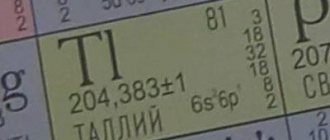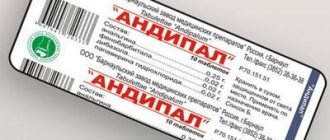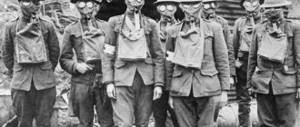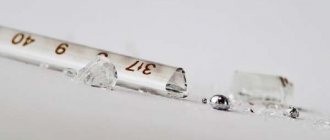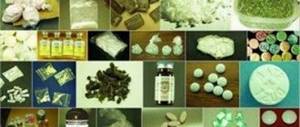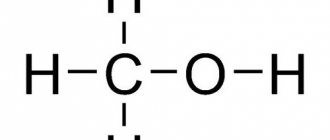Propane poisoning is a serious disorder that has detrimental effects on your health. This substance is a colorless gas that is odorless. To prevent its leakage, components with a specific aroma are added. The product is used quite actively - for heating, as automobile fuel, for gas stoves. The cylinders use a mixture of propane and butane.
In construction, the product is used when welding small elements of metal structures. Propane is also used to make solvents. In addition, it is used as a refrigerant in air conditioners and refrigerators. The symptoms and treatment of poisoning with this substance are of interest to many people.
Causes of poisoning
You can be poisoned by this gas in industrial or domestic conditions. At the same time, such problems arise very rarely at enterprises, since gas monitoring sensors are used almost everywhere. In rooms with high concentrations of propane, personal protective equipment is used.
At home, poisoning occurs due to neglect of safety rules. Most often, intoxication occurs in the following cases:
- Repair work - if you suspect a gas leak, you should call a specialist. It is strictly forbidden to try to eliminate the consequences of an accident on your own. This may cause poisoning, explosion or fire.
- Exhaust gases - when the vehicle is running, there is an accumulation of exhaust gases. These substances are considered less toxic compared to gasoline, but they can cause intoxication if kept indoors for a long time.
- The use of faulty devices - these include camping stoves, heaters, etc. If such devices malfunction or are used incorrectly, there is a risk of accumulation of large amounts of gases. For some people this results in a headache, while others get seriously intoxicated.
- Substance abuse - many people inhale propane fumes from lighters or cylinders. This is an extremely dangerous activity, because gas poisoning can occur instantly or gradually disrupt the functioning of the body.
What is a cold burn
A cold burn is a type of thermal injury when the main damaging agent is a low-temperature direct effect on tissue. This phenomenon has other varieties - frostbite or cold injury. They need to be distinguished. The agents of injury in frostbite are cold air, and in a cold burn they are substances with extremely low temperatures (water, gases or metal surfaces, ice). The effect can be general and affect the body as a whole. And also be local, having an adverse effect on a limited area.
Education mechanism
When a cold burn occurs , tissue damage and death occurs due to the local action of low temperatures. Then there are processes of reactive inflammation.
Symptoms
Signs of propane intoxication include dizziness, watery eyes, headaches, breathing problems, and pain in the heart. Depending on the severity of propane poisoning, symptoms may vary:
- With a mild form of intoxication, the victim experiences dizziness, drowsiness, and minor muscle pain. Subsequently, allergic reactions may occur. They manifest themselves in the form of lacrimation, pain, and redness of the eyes. Breathing is also impaired and chest pain occurs.
- Moderate propane poisoning is accompanied by the same symptoms. However, they are also accompanied by tachycardia and impaired coordination of movements. In addition, seizures and heart failure may occur.
- Severe intoxication is diagnosed with persistent loss of consciousness, which is accompanied by involuntary urination. A person’s skin turns blue, convulsions increase, and breathing is shallow. At this stage, intoxication of the entire body occurs.
If a lethal dose of gas enters the body, an instant form of poisoning develops. Intoxication can occur literally after 2-3 breaths. In this case, the person instantly faints, suffocates, and then dies.
Gradual or intentional poisoning of the body with propane can be suspected by the following signs:
Treatment
A person who has been poisoned by this substance must be hospitalized. Doctors select therapy depending on the patient's condition. If necessary, he is given oxygen and prescribed drug therapy. Anti-inflammatory drugs, cardiovascular drugs, and analgesics can be used for this purpose.
The course of treatment is selected individually, taking into account the degree of intoxication. The victim should remain in the hospital until the symptoms of poisoning are completely eliminated.
After completion of treatment, rehabilitation measures are prescribed. Such people need constant medical supervision. The fact is that poisoning negatively affects human organs and systems, and these changes cannot be seen immediately. Therefore, it is recommended to monitor the victim’s condition for 3 years.
Have you ever experienced propane poisoning?
- Yes it was
- No, it was not
- Now there are symptoms of intoxication
ResultsPoll Options are limited because JavaScript is disabled in your browser.
- No, there was not 54%, 129 votes 129 votes 54% 129 votes - 54% of all votes
- Yes, it was 27%, 64 votes 64 votes 27% 64 votes - 27% of all votes
- Now there are symptoms of intoxication 19%, 46 votes 46 votes 19% 46 votes - 19% of all votes
Total votes: 239 10/06/2017 You or from your IP have already voted.
- Yes it was
- No, it was not
- Now there are symptoms of intoxication
You or from your IP have already voted. results
First aid
It is very important to help the poisoned person in a timely manner. This will help prevent dangerous consequences. So, first aid involves doing the following:
- Take the victim outside. If it is not possible to leave the room, you should open all the windows to create a draft.
- Find and eliminate the gas leak area. If you can’t do this yourself, you need to urgently call the gas service.
- Call an ambulance. It is important to clearly describe the current situation.
- Loosen or remove tight clothing.
- Perform artificial respiration if necessary. The procedure is carried out if the person is not breathing.
- Apply cold to your head and slightly elevate your legs.
- Stimulate blood circulation by rubbing the chest and limbs. If a person is cold, he needs to be wrapped in a warm blanket. There must be ammonia nearby, which will help bring the victim to his senses.
- If vomiting occurs, the patient should be placed on his side. This will help prevent vomit from entering the respiratory system.
- Give a lot to drink. It is best to use clean water, but warm tea will also work.
What to do with the premises
After eliminating the leak, the gas-filled room should be well ventilated and washed. It is worth opening all doors and windows for 1-2 days, then doing general cleaning. Only after completing these steps can you be indoors without fear for your health.
Symptoms of the lesion
To begin with, it is worth noting that a burn with propane gas is a thermal injury, and not a chemical injury, as many people think. But the mechanics of getting wounded are different from being injured, for example, by a stove or boiling water. When evaporating, the gas gives up a significant part of its internal temperature to the environment and, as a result, becomes cold. This is the cause of the damage - a sharp drop in temperature. An example is the analogy with nitrogen, which is used in various medical and cosmetic procedures. For example, upon contact with small tumors, they die.
The symptoms of a propane burn differ from other thermal injuries:
- Redness;
- Burning sensation (rarely - tingling);
- Numbness;
- Further, the above symptoms intensify, the damaged area partially loses sensitivity, and blisters with watery contents appear.
Important! Under no circumstances should bubbles formed during a propane burn be opened on your own; consult a doctor.
- In severe episodes, necrosis begins and gangrene appears.
Consequences of poisoning
The main complications of intoxication with this substance include the following:
- development of respiratory pathologies - pneumonia, bronchitis, laryngitis, etc.;
- deterioration of cognitive functions;
- the appearance of chronic heart failure.
In case of poisoning with this substance, the possibility of long-term consequences cannot be excluded. Therefore, after discharge from the hospital, the victim must undergo preventive examinations every 6 months. It is removed from medical supervision only after 3 years.
Classification
All thermal injuries are divided into degrees. The classification is based on the duration of exposure to the damaging agent.
The following degrees are distinguished:
- The first is that it is characterized by a sharp pallor of the skin at the site of exposure to cold. It is accompanied by a feeling of burning, numbness, and tingling. If the area is placed in warm water, redness occurs. Sometimes moderate pain occurs. After about a week, self-renewal of the epithelium begins and peeling appears.
- The second one occurs during prolonged contact with a damaging agent. Signs of damage appear later, up to thirty hours from the moment of exposure. Tanya swells, blisters filled with liquid form. No scars are formed during healing; this occurs within up to two weeks.
- The third is when blisters form, filled with cloudy bloody contents. Parts of necrosis appear, sensitivity of the affected areas is lost. Tissue restoration takes up to a month, leaving cicatricial changes in the skin.
- The fourth one occurs in production upon contact with refrigerants. The damaged area is very cold. After some time, its color becomes black and blue. More often only soft tissues are affected, less often even joints and bones are affected. Damaged parts cannot be repaired.
With a cold burn, uniform tissue damage occurs extremely rarely. Near the area of the fourth degree of damage, there are zones with the second or third.
Prevention of poisoning
To avoid poisoning, you need to pay special attention to preventive measures:
- constantly monitor the condition of gas devices;
- If a malfunction is detected, immediately stop the gas supply and call a special service;
- ensure good ventilation in the room with gas equipment;
- stop using gas stoves for heating purposes;
- exclude children from contact with gas appliances;
- avoid spilling liquid on the burners;
- shut off the gas supply to the gas pipeline.
In case of propane poisoning, there is a high probability of developing dangerous complications. To avoid such problems, you need to be careful when working with gas devices. If intoxication does occur, it is very important to provide the victim with adequate assistance in a timely manner.
Propane Applications
Propane has a high calorific value and is convenient for use, transportation and storage. When burning, it does not emit by-products. Due to its qualities, it is widely used in industry and in everyday life.
- Automobile transport. PA (propane for cars) and a mixture of PBA (propane-butane for cars) are used as automobile fuel. Propane is superior to gasoline in several respects: it is cheaper, environmentally cleaner, reduces wear of parts, prevents metal corrosion, and prevents overheating of the power unit in the summer. To install gas equipment, no structural changes are required in the car.
- In everyday life, propane is used for heating private residential buildings and providing hot water in places remote from the central water supply and gas pipeline. Also in everyday life there are many appliances that run on liquefied propane - lighters, tourist stoves, gas refrigerators, blowtorches. They are mainly used where there is no access to electrical networks: on camping trips, on yachts, in motor homes.
- Industry. The uses of propane in industry are varied.
Physical properties
Colorless, odorless gas[4]. Very slightly soluble in water. Boiling point −42.1 °C. Freezing point -188 °C. Forms explosive mixtures with air at vapor concentrations from 1.7 to 10.9%. The critical temperature of propane is Tcr = 370 K, the critical pressure Pcr = 4.27 MPa, the critical specific volume Vcr = 0.00444 m3/kg [5] The density of liquefied propane at 298 K is 0.493 t/m3.
- Density of the gas phase under normal conditions = 2.019 kg/m3.
- Density of the gas phase at a temperature of 15°C = 1,900 kg/m3.
- Specific heat of combustion = 48 MJ/kg.
Safety in the car
Using propane as a fuel allows a person to save money, while the gas does not have a harmful effect on the environment. But specialists must install the required equipment. It is not recommended to do this on your own.
When using a gas car, you also need to be careful and attentive; do not use the car if the equipment is damaged.
Propane butane poisoning is dangerous for humans and causes negative consequences for the brain and other internal organs. The gas can be fatal if not treated properly. The duration of treatment depends on the patient's condition and the degree of poisoning.
In search of a thrill, Russian teenagers poison themselves with gas from lighters
Children's substance abuse swept Russia in the 1990s. The epidemic was overcome, but a couple of years ago, sniffing—inhaling lighter gas—began to gain popularity among Russian teenagers. Most people become familiar with volatile hydrocarbons at school. Some people try to “puff” for the first time at the age of 10-11. Lenta.ru found out the reasons for the popularity of sniffing and the possible consequences of misuse of national property.
Artem is in his senior year at one of the Samara schools. At the age of 16, he received his first rank in athletics, and soon hopes to become a candidate for master of sports, and in the future to become a professional athlete. He comes from a prosperous family and does not want to advertise his real name, because his father is “to some extent a public figure.” Artem is a sniffer: in his free time, he and his friends breathe gas to refill lighters.
They breathe gas directly from a cylinder or by first spraying it into a bag, or, in rare cases, into a plastic bottle. One large can is enough for several people, and it runs out in an hour and a half. The composition of the gas for refilling lighters usually includes propane, butane and isobutane. One cylinder costs from 50 to 150 rubles.
Artem took a puff for the first time at the age of 14. Then it was a banal interest and an ordinary lighter. “You take a lighter, unscrew everything on top, and carefully pour it into your mouth. You drink the whole thing and it’s covered,” he says.
It hit Artem hard, and after the first time he didn’t think about gas for two years, until a couple of months ago someone in his company said that a spray can was a “normal topic”, better than a lighter. So he rediscovered volatile substances.
Teenagers perceive such experiments with their bodies more as a prank, an opportunity to kill time and gain new sensations. On the one hand, gas is affordable - you can buy it in almost any store. On the other hand, it does not have such a negative image as drugs do. The chief narcologist of the Ministry of Health, Evgeniy Bryun, is confident that sniffing is one of the manifestations of people’s inherent desire to change their mental state.
“When you’re 16, drugs are scary and expensive. I’m very afraid of killing myself with some crap like that,” the guy explains. For him, gas is a new experience and entertainment, almost like cigarettes or alcohol, but not as popular.
“I wouldn’t say that I’m directly stuck on it, we don’t do this very often,” continues Artem. He hung out with his peers at least once a week, but usually more often. Sometimes in someone’s home, sometimes right on the street - passers-by didn’t react much to this, breathing gas is not illegal, so there is no need to hide.
Almost every time was spontaneous for the teenager. We went out for a walk, went into a store, bought a can of spray, and caught the disapproving glance of the saleswoman. Then someone's empty apartment and a group of high school students alone with gas.
Another Lenta.ru interlocutor, 22-year-old Dmitry, spent his childhood and school years in a small town in the Komi Republic. In high school, a friend suggested that he “puff,” saying that it would feel like taking psilocybin mushrooms.
Compared to cigarettes and alcohol, gas is not particularly popular among his peers, but there were still a few people who shared similar interests. They bought a cylinder every two or three days, and one of his friends “breathed all day long.”
Together with his girlfriend, he “puffed” through the entrances and apartments for a year. After delving into his memories, Dmitry adds: “We caught some cool auditory and cognitive glitches. Like a trance, it’s like you’re not here.”
Each sniffer's experience is different. Everyone is “held” differently - from 30 seconds to 10 minutes and even more. Some may feel almost nothing, while others may be transported to another dimension. The gas often makes you feel dizzy, weak, tingling in the arms and legs, nausea, disorientation, confusion, and sometimes even hallucinations. All these are signs of hypoxia and poisoning. And this is precisely why many people get a thrill.
22-year-old Ekaterina learned about sniffing in her native Novy Urengoy when she was 15 years old. According to her, she tried gas from a cylinder only once, and she was not impressed with the sensations.
How household gas affects the body
The risk group includes residents of houses using a gas stove or stove, water heater or burner. Carbon monoxide is poisoning sleeping people who did not take care of their safety, children who are left alone at home. People who have taken a large dose of alcohol or drugs and are able to think sensibly are predisposed.
Household gas, often used by residents of houses and in production, is indispensable in the kitchen, since housewives use it when preparing food, and at gas stations they resort to it as an inexpensive fuel. Methane is often found in different areas of life, because its use does not cause difficulties. Because of this, it is recommended to use household gas carefully, taking into account its natural characteristics.
To give an approximate idea of gas poisoning, a parallel is drawn between household gas and a drug. With prolonged exposure, the victim’s central nervous system begins to seriously lose ground. All this results in problems with the brain and all organs, so you should quickly leave the room and ventilate it as soon as possible. Otherwise, poisoning will follow, and then death.
Considering the serious damage to the nervous system and the victim’s body, it is safe to say that poisoning with poisonous carbon monoxide has dangerous consequences. But with a mild form of gas poisoning, there is no need to fear such a harmful effect. A person feels a slight malaise, expressed by drowsiness, migraine and passivity. Excessive secretion from the tear glands can also be a symptom of gas poisoning. There is a feeling of a foreign object in the eyes. Older people may experience heart pain.
If moderate gas poisoning is observed, then visible problems with the central nervous system will appear, which will be expressed in dizziness, vomiting and paresthesia. Very often, symptoms of household gas poisoning result in problems with the musculoskeletal system, and tachycardia is observed.
In the third stage of gas poisoning - the most dangerous, in case of delay, an irreversible outcome occurs - death. A person experiences pulmonary edema, the cardiac system fails, and he begins to lose consciousness. If first aid for gas poisoning is not provided, the victim falls into a coma, and the worst happens.



